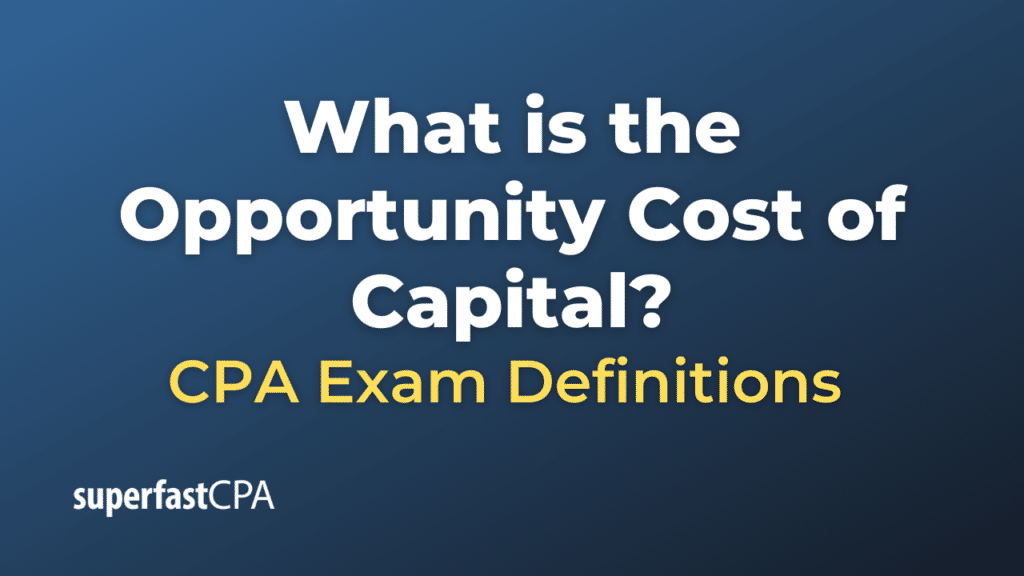Opportunity Cost of Capital
The opportunity cost of capital refers to the return that could have been earned on the best alternative investment of similar risk. In other words, it’s the expected return you forgo by choosing a particular investment over the next best alternative.
For instance, if you choose to invest in a startup company instead of the stock market, the opportunity cost of capital is the return you could have earned on the stock market (assuming similar risk profiles). If the startup fails and you lose your investment, while the stock market appreciates, the opportunity cost would be quite high.
The opportunity cost of capital is an important concept in finance and investing because it helps companies and investors make decisions about where to allocate their resources. If the expected return on an investment is lower than its opportunity cost, it might not be a worthwhile investment. The concept is particularly important in capital budgeting decisions, where it’s often used as the discount rate to evaluate the net present value of different investment opportunities.
It’s also important to note that the opportunity cost of capital is typically considered a risk-adjusted rate, meaning that it should reflect the riskiness of the investment. This is why the risk-free rate (such as the return on a U.S. Treasury bond) is often used as a baseline, with a risk premium added to account for the riskiness of the particular investment.
Example of the Opportunity Cost of Capital
Let’s say you have $10,000 to invest. You’re considering two different investment opportunities:
- Investing in a friend’s startup business, which has the potential to yield a 15% return.
- Investing in the stock market, where you expect a 7% return.
Now, if you decide to invest in your friend’s startup, the opportunity cost of capital is the 7% return you could have earned by investing in the stock market. This is the return you’re giving up to pursue a potentially higher-return investment.
If the startup does well and you actually earn a 15% return, you’ve made a good investment decision – the actual return exceeds the opportunity cost. But if the startup fails and you lose your investment, your opportunity cost (7% you could have earned in the stock market) will be higher than the return you ended up with (which, in the case of a complete loss, would be -100%).
In this scenario, understanding the opportunity cost of capital could help you make a more informed decision about where to invest your money. The opportunity cost isn’t the only factor you should consider, of course – the potential return, the risk of the investment, and your personal financial goals and risk tolerance are all important considerations as well. But the opportunity cost can provide a useful baseline for comparison.












